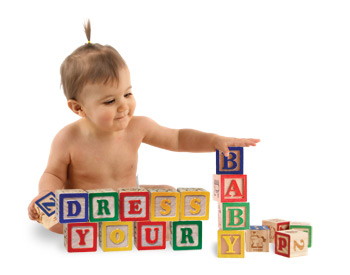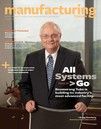Dress Your Baby
 As with a child, upon the birth of a business, the owners must “dress” their business by selecting an entity structure from which to operate.
As with a child, upon the birth of a business, the owners must “dress” their business by selecting an entity structure from which to operate.
While most of us would smile at seeing a baby waddle through a park While most of us would smile when seeing a baby waddle through a park wearing only a diaper, the sight of a fully grown man wandering through the park clothed only in a diaper would result in a much different reaction. I have never witnessed such a sight, but I imagine laughter and ridicule would be the most common responses. Fortunately, this is a rare occurrence as our parents adjust to our changing needs by dressing us in more socially acceptable manners.
Unfortunately, the “parents” of a business (i.e., the owners) are often unaware that they must take care of their business in a similar manner as it grows and matures. Upon the birth of a business, the owners must “dress” the business by selecting an entity structure from which to operate. The choices are numerous and generally include a sole proprietorship, general partnership, limited liability company, S corporation, C corporation or a multiple-entity structure. But just as parents dress their children differently as they age, business owners must take care to ensure that their business is operating from a structure that fits its current needs. It is especially important for an owner to consistently question whether the structure fits the business’ changing needs because, unlike a child, a business will not protest and complain when its clothes no longer fit.
For example, a business often begins simply, with a single individual working from his home. During this beginning stage, the company may have very few assets, no employees (aside from the owner) and will generally realize small amounts of profits or losses. A simple structure, such as a sole proprietorship, is common for such a business in its infancy. The sole proprietorship is common as corporations’ administrative burdens (i.e., additional tax returns, additional bank accounts, etc.) are avoided. Additionally, a sole proprietorship’s flaws are not yet critical if the business has not acquired assets, there are no employees (aside from the owner) and the business is not yet profitable.
Once the business grows, acquires assets, employs workers and generates significant profits, the sole proprietorship may not be the best entity structure as it could lead to excessive and unnecessary taxes, and expose the owner to personal liability. Instead, an S corporation is commonly recommended as the business owner’s personal liability will be minimized. In this case, the burdensome administrative tasks that must be performed, in order for the business to operate in corporate form, may be far outweighed by the legal and tax advantages provided by the corporation. However, the same business may soon outgrow the single corporation structure as the revenues and profits grow, or if the company changes its line of business, acquires a second or third line of business, acquires substantial equipment, etc. Any of these changes may prompt a shift to a multiple-entity structure for tax and legal purposes. A multiple-entity structure can dramatically increase protection for a business’ assets as well as minimize the disadvantages of any particular entity; however, it must be adopted carefully as the potential tax and legal issues surrounding a multiple-entity structure are complex.
When meeting with clients, I always ask, “Why are you operating as an S corporation?” or, “Why are you operating as a sole proprietorship?” Generally, the client gives me a blank look and replies one of two ways: “My company has always operated this way,” or, “My CPA organized the business under the current structure upon its inception.” One of my clients indicated that he started his business as a C corporation in 1979 and discussed electing S corporation status with his accountant at that time; however, the accountant left on a two-week vacation before the paperwork could be filed and the topic was never re-addressed. Another client of mine formed a machine shop in 1993 as a sole proprietorship and was interested in forming an LLC to conduct the business. However, his CPA had advised against the LLC as it was “too difficult” and would not provide any more asset protection than a sole proprietorship (both incorrect conclusions). In each of these cases, the businesses changed from infant companies with little assets, to more mature businesses with substantial amounts of equipment and employees—yet no change had been made regarding structure.
The point of this article is not to suggest that sole proprietorships and S corporations are poor choices, or that multiple entities are the optimal structures for every business. Rather, the point of this article is to strongly suggest that an entity structure is not a one-time decision that should be made at the birth of a business, or in its early stages. Instead, a business owner should be aware that the needs of the business will change as the business matures.
Working in conjunction with professional advisors, the business owner should continually consider the business’ current structure and whether it facilitates business goals, whether personal assets are exposed to business liabilities, whether business assets are fully exposed to judgments against the business, whether the structure creates unnecessary taxes, whether any legal or tax changes impact the current structure and whether the structure facilitates any succession or estate planning goals. Failure to critically analyze how the business is “dressed” may cause a mature and adult business to, figuratively, be caught wearing a diaper in the park. While this may not result in laughter and ridicule, failure to properly dress the business may lead to extremely unfortunate legal outcomes and excessive taxes.







